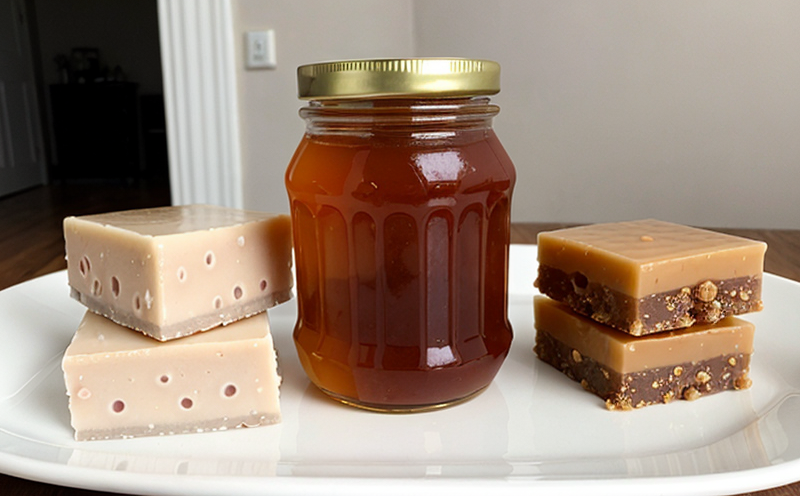EN 13601 Pesticide Residue Testing in Honey
The European Standard EN 13601 is specifically designed to provide a harmonized method for the determination of pesticide residues in honey. This standard aims to ensure consistent and reliable testing across different laboratories, which is crucial given the global trade dynamics of agricultural products.
This service ensures that honey producers, importers, and exporters can verify compliance with international food safety regulations and consumer protection laws. By adhering to EN 13601, stakeholders in the food and feed sector ensure the integrity and reputation of their products in the market.
The standard covers a wide range of pesticides that are commonly used in agricultural practices but can potentially contaminate honey if not managed properly. The method described in EN 13601 is sensitive enough to detect even minute traces of these substances, ensuring that no harmful residues make it into the final product.
The testing process involves several key steps: sample preparation, extraction, clean-up, and analysis using gas chromatography-mass spectrometry (GC-MS), which is the most reliable method for identifying and quantifying pesticide residues. GC-MS provides precise results that are essential for regulatory compliance.
Compliance with EN 13601 not only protects public health but also enhances consumer confidence, fostering trust between producers and consumers. This standard is widely accepted in Europe and is increasingly being recognized globally as a benchmark for pesticide residue testing in honey.
The implementation of this service can significantly impact the reputation and market position of businesses involved in the honey supply chain. By ensuring that their products meet stringent international standards, companies can avoid costly recalls and legal disputes while also positioning themselves as leaders in food safety and quality assurance.
Furthermore, EN 13601 helps to mitigate risks associated with pesticide residues, which could otherwise lead to health issues or even product bans. The standard is continuously updated to reflect new pesticides and methods of analysis, ensuring that it remains relevant and effective.
In summary, EN 13601 Pesticide Residue Testing in Honey is a critical service for the food and feed sector, particularly those involved with honey products. It ensures compliance with international standards, enhances product quality, and protects consumer health while also contributing to the overall competitiveness of the industry.
- Sample preparation involves thorough cleaning and drying of the honey samples before extraction.
- The extraction process typically uses a solvent like acetonitrile or methanol to dissolve pesticide residues.
- Cleanup steps are necessary to remove any interfering substances that could affect the GC-MS analysis.
- Analysis is performed using gas chromatography-mass spectrometry, providing precise and reliable results.





